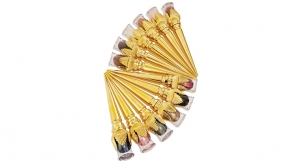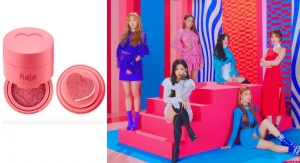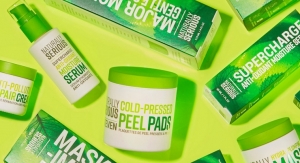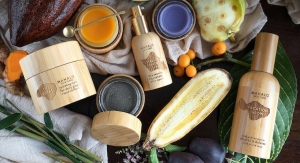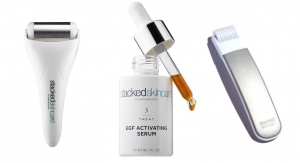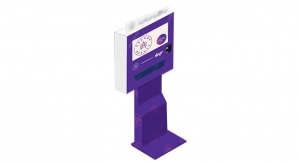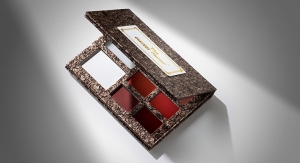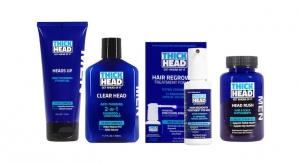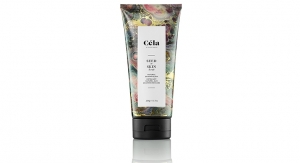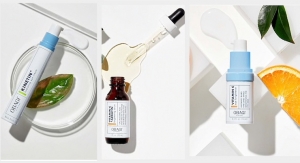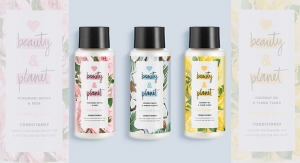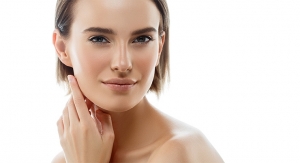04.02.19
What matters most to women who are looking to purchase D2C beauty products?
Yotpo, a leading provider of integrated commerce marketing solutions, has released its Direct-to-Consumer (D2C) Beauty Trends Report, showcasing findings from a global survey that examines the marketing factors that drive women in the U.S. and UK to engage directly with beauty brands. Respondents are eCommerce shoppers who say they prefer to buy beauty products directly from brands instead of third-party retailers like Sephora or Amazon.
“We have a front row seat to the rise of digital-first beauty brands changing the face of beauty, with the type of products they’re creating and who they’re creating it for. As these brands grow, we surveyed beauty consumers to provide brands with insight into the values and marketing strategies that can help deepen relationships with their customers,” said Tomer Tagrin, CEO & Co-founder, Yotpo.
Findings from the Yotpo D2C Beauty Trends Report include:
Diversity Dominates Beauty Buys
Just as inclusive sizing has become a rallying cry in fashion, the call for diversity now reverberates in the beauty industry. More than 7 in 10 women say it impacts buying decision. Women prefer to buy from brands whose ads feature a variety of ethnicities (75.3%) and show women of different body types (84%).
Social Proof Provides the Strongest Purchase Influence
When it comes to influencing women to shop from a specific beauty brand, 44.7% say customer reviews are most influential, with referrals from friends a close second at 44.5%. Both outpace TV commercials (17.7%), digital and social media ads (10.2%), and offline ads (6.8%), combined.
The Brand Is More Influential Than Influencers
A brand‘s ‘direct’ marketing channels: email (17.4%), social media accounts (14%), and even product packaging (14.6%) each have more influence on a woman’s decision to buy than endorsements from influencers and celebrities (11.6%).
UK Millennials Are More Price Sensitive, eCommerce-Friendly
More UK Millennials (52%) buy directly from a beauty brand than their U.S. counterparts (39%) because the prices are better. 60% of Millennials in the UK prefer buying from a brand’s eCommerce site while 61% of Americans prefer to buy from a physical location or pop-up shop.
How to Turn Products from a Nice-to-Have to a Have-to-Have
We’ve all done it - succumbed to buying that product we didn’t truly “need.” The #1 thing that convinces women of every generation to make a discretionary purchase are positive customer reviews (60.2%). After that brands need to get more specific if they want to appeal to a certain generation. For example, GenZ is most influenced by influencers/celebrities (34%) as well as Instagram popularity (32%); Millennials and GenX are influenced by customer photos (36% and 28%, respectively) and customer videos (31% and 19%, respectively).
“The findings from our Beauty Trends survey prove that a brand’s ability to reflect consumers’ personal values can have a huge impact on marketing effectiveness,” commented Tagrin. “Brands should rethink how they reflect those values across every marketing touchpoint, from reviews and photos to social media, down to even their packaging.”
Yotpo’s D2C Beauty Trends Report presents findings from a survey of 1,875 U.S. and U.K. women (ages 14 - 73) administered via Pollfish between January 16 and February 4, 2019. The D2C Beauty trends report is available for download from Yotpo.com.
Yotpo, a leading provider of integrated commerce marketing solutions, has released its Direct-to-Consumer (D2C) Beauty Trends Report, showcasing findings from a global survey that examines the marketing factors that drive women in the U.S. and UK to engage directly with beauty brands. Respondents are eCommerce shoppers who say they prefer to buy beauty products directly from brands instead of third-party retailers like Sephora or Amazon.
“We have a front row seat to the rise of digital-first beauty brands changing the face of beauty, with the type of products they’re creating and who they’re creating it for. As these brands grow, we surveyed beauty consumers to provide brands with insight into the values and marketing strategies that can help deepen relationships with their customers,” said Tomer Tagrin, CEO & Co-founder, Yotpo.
Findings from the Yotpo D2C Beauty Trends Report include:
Diversity Dominates Beauty Buys
Just as inclusive sizing has become a rallying cry in fashion, the call for diversity now reverberates in the beauty industry. More than 7 in 10 women say it impacts buying decision. Women prefer to buy from brands whose ads feature a variety of ethnicities (75.3%) and show women of different body types (84%).
Social Proof Provides the Strongest Purchase Influence
When it comes to influencing women to shop from a specific beauty brand, 44.7% say customer reviews are most influential, with referrals from friends a close second at 44.5%. Both outpace TV commercials (17.7%), digital and social media ads (10.2%), and offline ads (6.8%), combined.
The Brand Is More Influential Than Influencers
A brand‘s ‘direct’ marketing channels: email (17.4%), social media accounts (14%), and even product packaging (14.6%) each have more influence on a woman’s decision to buy than endorsements from influencers and celebrities (11.6%).
UK Millennials Are More Price Sensitive, eCommerce-Friendly
More UK Millennials (52%) buy directly from a beauty brand than their U.S. counterparts (39%) because the prices are better. 60% of Millennials in the UK prefer buying from a brand’s eCommerce site while 61% of Americans prefer to buy from a physical location or pop-up shop.
How to Turn Products from a Nice-to-Have to a Have-to-Have
We’ve all done it - succumbed to buying that product we didn’t truly “need.” The #1 thing that convinces women of every generation to make a discretionary purchase are positive customer reviews (60.2%). After that brands need to get more specific if they want to appeal to a certain generation. For example, GenZ is most influenced by influencers/celebrities (34%) as well as Instagram popularity (32%); Millennials and GenX are influenced by customer photos (36% and 28%, respectively) and customer videos (31% and 19%, respectively).
“The findings from our Beauty Trends survey prove that a brand’s ability to reflect consumers’ personal values can have a huge impact on marketing effectiveness,” commented Tagrin. “Brands should rethink how they reflect those values across every marketing touchpoint, from reviews and photos to social media, down to even their packaging.”
Yotpo’s D2C Beauty Trends Report presents findings from a survey of 1,875 U.S. and U.K. women (ages 14 - 73) administered via Pollfish between January 16 and February 4, 2019. The D2C Beauty trends report is available for download from Yotpo.com.



